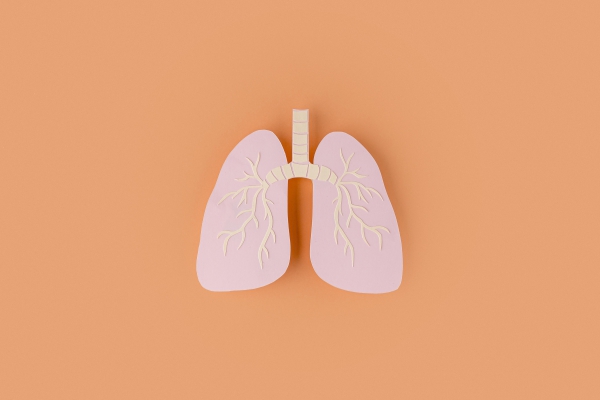Asbestosis, Lung disease, Asbestos, Occupational Disease, Lung cancer
Description : Asbestosis is a chronic disease affecting the lungs following inhalation of asbestos fibres.
Article Details :
What is asbestosis?
Asbestosis is a chronic disease affecting the lungs following inhalation of asbestos fibres. Prolonged inhalation of asbestos fibres causes scarring of lung tissues and results in difficulty breathing. The signs and symptoms of asbestosis become apparent many years after continued exposure. Asbestos is a group of naturally occurring minerals that are very resistant to heat and corrosion which is why it was extensively used in the past in products such as cement, insulation and floor tiles. However, the federal government regulated its use in the 1970s which is why it is unlikely that you acquire asbestosis nowadays, given that the safety regulations are followed to the letter.
The World Health Organisation (WHO) estimates that around 125 million people worldwide are exposed to asbestos at work and 100,000 people die from asbestos-related cancers and asbestosis. In addition, 400 deaths have been linked to non-occupational exposure to asbestos. The National Centre for Health Statistics (NCHS) reported that 6,290 people died from asbestosis in the year 1999-2010. Following the World Trade Centre collapsed in the year 2001, 400 tons of asbestos were released in the environment which may have affected people which were in that area. The use of asbestos is banned in several countries including Japan, Australia, South Africa and nations of the European Union. Its use is regulated and restricted in the United States and Canada.
What are the causes and risk factors of asbestosis?
Being continually exposed to high levels of asbestosis may result in some fibres of asbestos being lodged within your alveoli which are tiny sacs within your lungs, responsible for exchange of carbon dioxide for oxygen in your blood. These fibres irritate your lung tissues and results in formation of scar tissue which makes your lungs stiff. This eventually leads to breathing difficulties. As the condition progresses, there will be a greater amount of scar tissues present within your lungs which will make your lungs even stiffer which will prevent your lungs to expand and contract normally. Cigarette smoking increases the rate of progression of the disease as it increases the retention of asbestos fibres in the lungs.
Manufacturers used asbestos in the following products:
- Vinyl-asbestos floor tiles.
- Asbestos paper in insulation and filtration products.
- Asbestos cement which was used to manufacture pipes, clapboards, sheets and shingles.
- Brake linings and clutch facings.
- Spray products used for thermal, acoustic and fireproofing purposes.
- Textile products such as tape, cord, rope and felt.
The following occupations are associated with asbestosis:
- Plumbers.
- Insulation workers.
- Pipefitters.
- Boilermakers.
- Welders.
- Steamfitters.
- Janitors.
- Railroad workers.
- Asbestos miners.
- Workers responsible for removing asbestos insulation around steam pipes in old buildings.
- Electricians.
What are the signs and symptoms of asbestosis?
The signs and symptoms of asbestosis only becomes apparent after 10-40 years after prolonged exposure of asbestos and include:
- Shortness of breath.
- Loss of appetite.
- Weight loss.
- Chest pain or tightness.
- Persistent dry cough.
- Finger clubbing- this is when your fingers and toes becomes wider and rounder than normal.
- Reduced chest expansion upon breathing.
- Pedal edema- this is when your ankles and feet become swollen.
There are certain diseases which may resemble asbestosis which need to be ruled out and these include:
- Dermatomyositis.
- Black lung disease (coal workers’ pneumoconiosis).
- Hypersensitivity pneumonitis.
- Idiopathic pulmonary fibrosis.
- Silicosis.
- Sarcoidosis.

Making a diagnosis
To make a diagnosis, your doctor will take a detailed history from you to know more about your symptoms and potential exposure to asbestos in the past. After the history taking, your doctor will perform a thorough physical examination to look for signs of asbestosis. To confirm the diagnosis, your doctor will order some tests and these include:
- Chest x-ray: A chest x-ray is done to assess whether there is presence of scarred tissues within the lungs which may be apparent as white opacities on the x-ray film. However, these may be present in only 50% of cases
- Computed Tomography (CT) scan: A CT scan of the lungs is done to assess for the presence of scarred lung tissues and fluids within the lungs. It is more accurate than a chest x-ray and may detect asbestosis in early stages.
- Lung function test or spirometry: For this test you will be required to blow as hard as you can into a device known as a spirometer. This test measures the amount of air you inhale and exhale, and how fast the air is breathe in and out.
- Oximetry: This test measures the percentage of oxygen within your blood. Your doctor will place the device (oximeter) on the tip of one of your fingers to Read more




